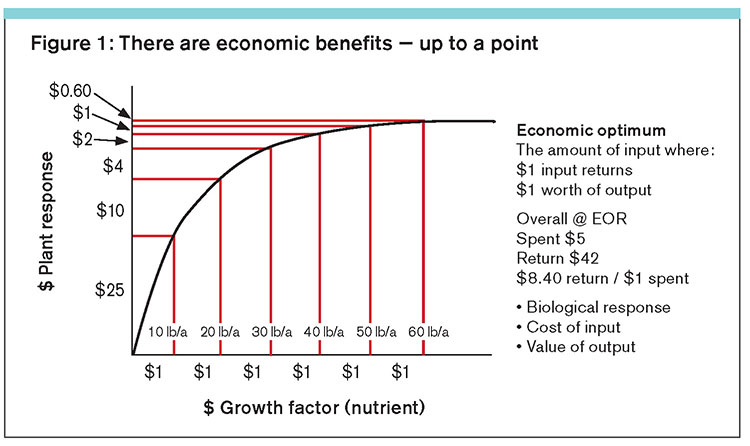The four R’s of nutrient stewardship, or nutrient management, are commonly referred to when talking about proper nutrient application. The four R’s stand for right source, right rate, right time, and right place. This recommendation serves to guide farmers to the practices that help keep nutrients on and in the field.
Implementation of the four R’s helps to align the economic, environmental, and social components of nutrient management. The Nutrient Stewardship 4R Pocket Guide helps to explain what the components are for each of the four R’s.
Fair guidelines to follow
The first R is right source. In order to determine the right source, the following should be taken into account:
Are the fertilizer nutrients being used (commercial or manure) available for immediate uptake, or is it delayed?
Is there a combination of fertilizers that can be utilized best?
What nutrients are already available in the soil?
The next R is right rate:
Match the amount of fertilizer applied to the crop nutrient uptake. What is the crop nutrient demand?
Perform a soil analysis (manure analysis as well if using this as the fertilizer source) to appropriately match the amount of fertilizer needed for crops based on individual field fertility.
Make sure the equipment being used to spread the fertilizer or manure is calibrated properly for appropriate distribution.
Be sure operators of the equipment spreading the fertilizer or manure are trained properly in using the equipment and know the appropriate rates and paths.
Consider crop yield goals.
Remember the law of diminishing returns: The unit of nutrient applied equals the crop yield increase generated (see Figure 1).

The third R is right time:
Plan for fertilizer nutrients to be available during crop demand — many times this is close to the time of planting.
Consider the weather and seasonal conditions. There is potentially more nutrient runoff during the winter, and saturated fields are unable to retain nutrients effectively. Application of fertilizer immediately before a large rainfall could contribute to nutrient runoff.
Michigan EnviroImpact is a runoff risk decision support tool to help with short-term planning of nutrient applications. Other regional runoff risk decision support tools can be found in Wisconsin, Ohio, and Minnesota.
Include mitigation of potential odors, mainly with manure. Consider location of neighbors, timing around holidays, and nearby public areas like schools, hospitals, township halls, churches, and so forth.
Lastly, determine the right place:
Place fertilizer in the root zone, where crops can successfully access the nutrients.
Consider the management practices for each field based on the crop being grown; soil type; slope; distance to surface waters; soil characteristics (can differ throughout the field) like nutrient supply capacity and the vulnerability to nutrient loss; phosphorus or P-Index; and potentially incorporate GPS and variable rate seeding data.
Document the details
It is also important to keep records. Why? Records allow for assessment and refinement over time.
Records of manure and soil analyses along with yields, nutrient applications, and even weather patterns allow for a retrospective look as to what worked in a field and what did not. They also allow refinements to be made to nutrient management plans that are in place to not only use less nutrients where possible, but to also improve crop yields while remaining environmentally sustainable.
Calculate the value
If using manure, what could that manure be worth from an economic value standpoint?
University of Minnesota Extension has developed a tool called the “What’s manure worth?” calculator. This tool allows individuals to rapidly estimate the value of manure for specific manure types, application methods, soil nutrient status, and crop needs. It can also create estimates based on fertilizer replacement value and application costs.
It is recommended to use a manure analysis obtained on your farm versus book values when possible. Book values may not always accurately represent the actual concentration of nutrients that are available. Additionally, it gives you a better idea of the value of your farm’s manure and the amount of money you may save in commercial fertilizer cost.
By utilizing the four R’s of nutrient stewardship, manure value calculators, and regional runoff risk decision support tools, you not only can be successful in proper nutrient application, but you can do it in ways that give you the most bang for your buck.
This article appeared in the August 2020 issue of Journal of Nutrient Management on pages 18 and 19.
Not a subscriber? Click to get the print magazine.




